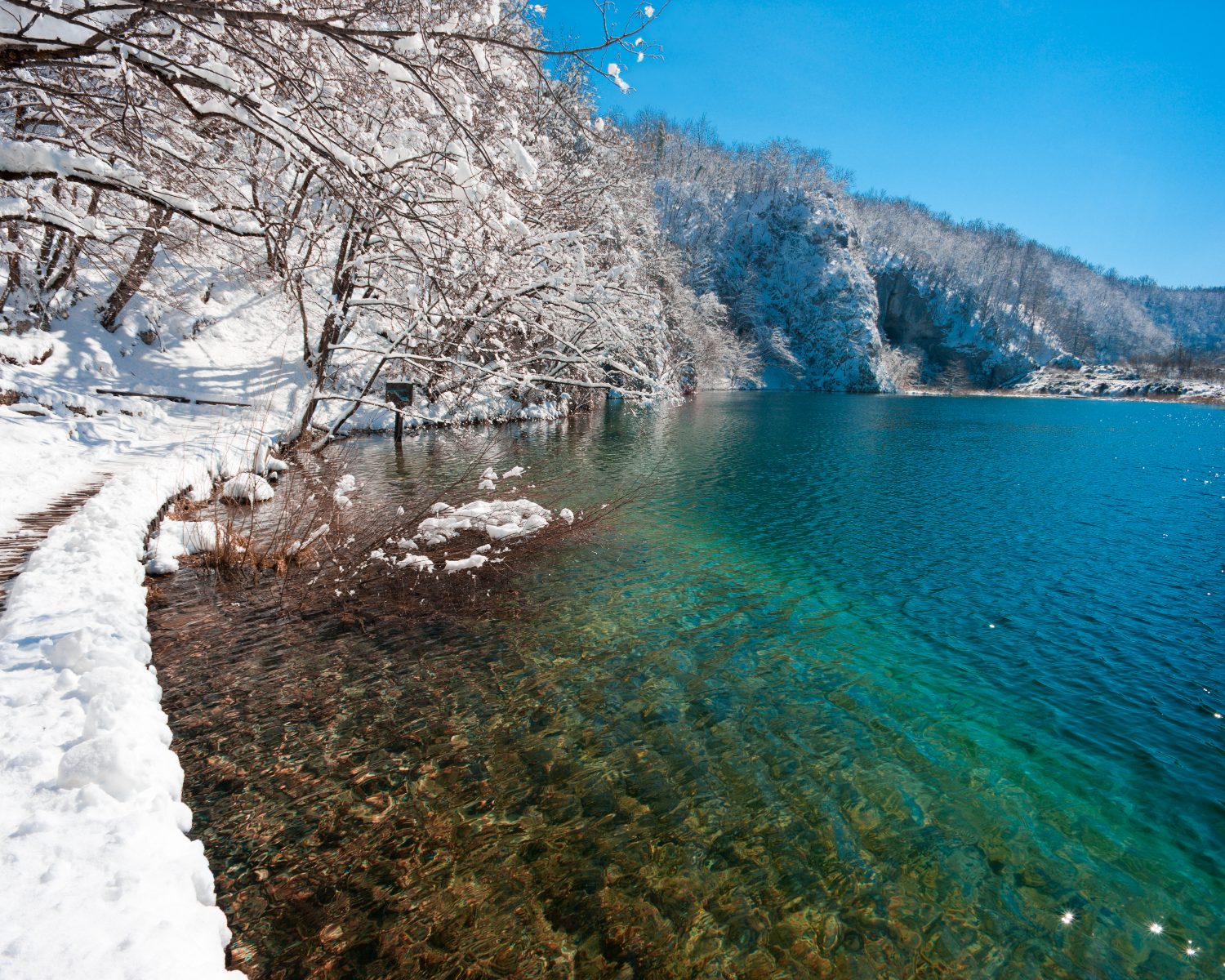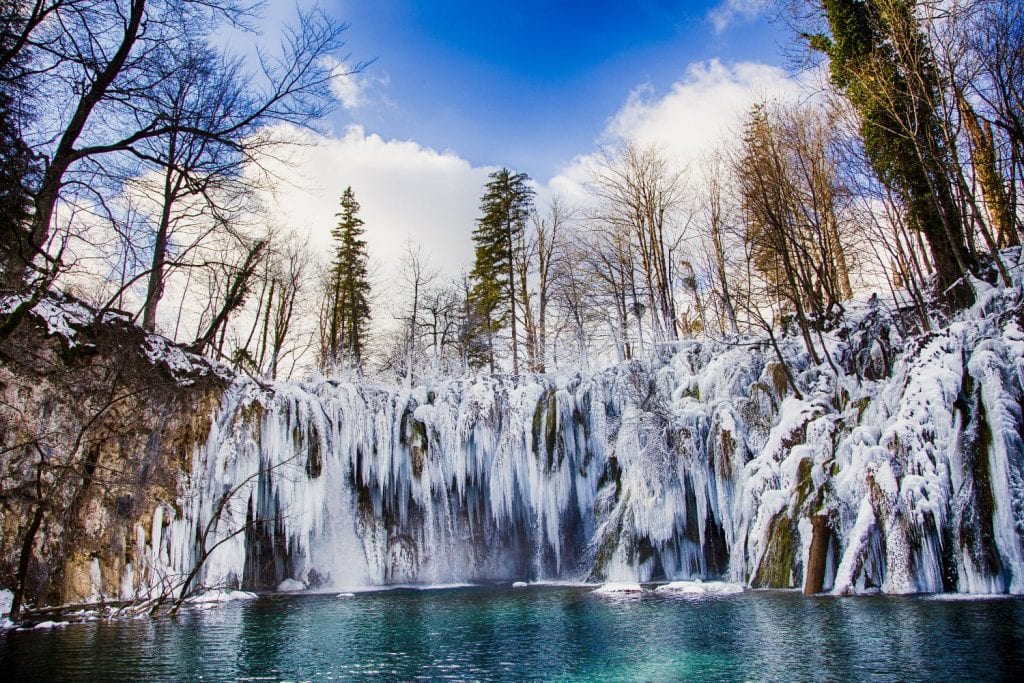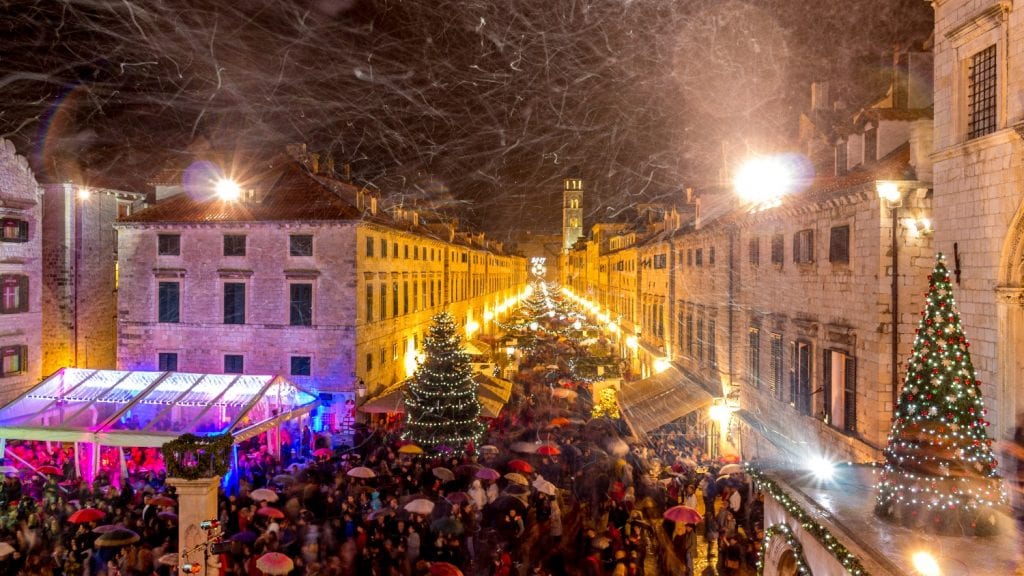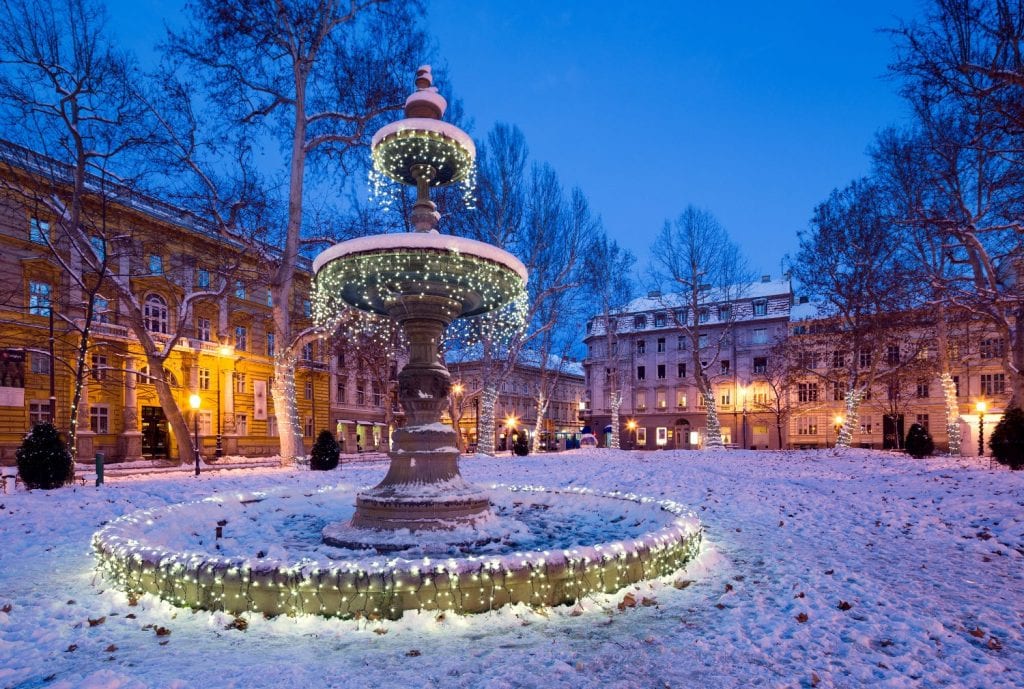Croatia is a beautiful small country stretching across fairly diverse terrain, so the temperatures vary greatly between the coastline and the interior. Here is what to expect from Croatian weather in winter!

Planning an off-season trip to Croatia? Great idea! Much like other Mediterranean countries, Croatia gets pretty crowded during the summer months. Sure, summer has its perks, but if you are a nature lover or a sports enthusiast, consider visiting Croatia during the calmer winter months. That way you can really explore everything that this charming country has to offer, but without the scorching summer heat and at a much lower price, too. If you are looking for true relaxation and a genuine local experience, travel off-season.
Croatia climate
Croatia is known for its sea and beaches, but Croatia has plenty to offer even in winter. Rijeka Carnival in February is a must-see and Plitvice lakes are absolutely magical during the snow season!

You already know that summer on the Mediterranean gets very hot and dry, with average temperatures reaching around 30°C all along the coastline, so we have prepared a guide on winter temperatures in Croatia. The Dinaric Alps separate the Mediterranean part of Croatia from the interior, which means there are two main types of climate in Croatia.
Winter temperatures across the country
The mountains have their own climate, very cold and snowy in winter. Winters on the coast, however, are cool and rainy, but not too cold. The North Adriatic gets a few degrees cooler than the south and it also gets more rain, while snow is overall rare on the coast, but does happen sometimes.
While summer may stretch well into September and even October in the far south around Dubrovnik and the islands, temperatures drop in November. In December, they range from 5 to 15°C on the coast and from 0 to 10°C in the continental region.

Sea temperatures drop to around 12°C in January, usually the coldest month in Croatia, although some people do swim year-round – but this is pretty extreme! Bura is a very cold wind occurring on the coast (usually in winter), so dipping during colder months is not advisable for the inexperienced.
In January, the average temperature on the coast is between 5 and 10°C, while in Zagreb it ranges from -3 to 14°C. Mornings get quite cold after the night temperature drop, but sunny winter days are still very enjoyable.

The beginning of February is sometimes even colder than January, but the average temperature is a few degrees higher. The air and sea usually start warming up in March with the beginning of spring.
Now you know what to expect from winter in Croatia so come and explore it for yourself, take a stroll along the sunny coastline on a chilly day and enjoy the tranquillity winter has to offer!